Do you need a degree to be a pilot?
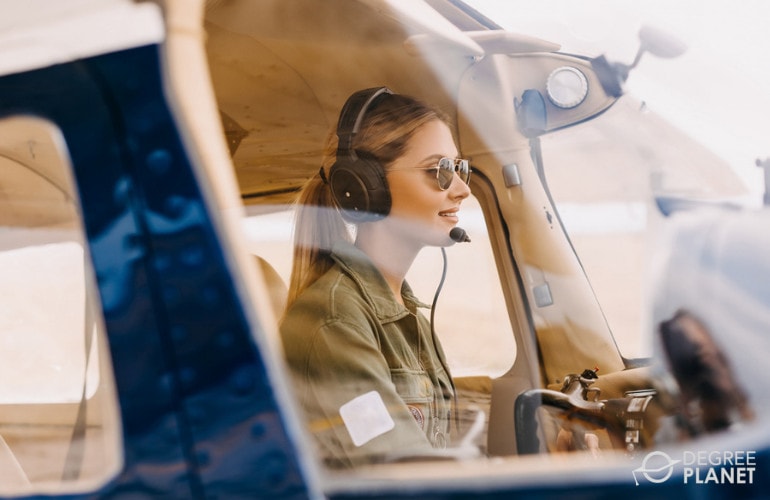
Many pilot jobs don’t require a degree, but certification requirements can be stringent in their own right. It’s also true that there are some jobs that require pilots to hold a bachelors.
Editorial Listing ShortCode:
If you don’t have a degree, you may prefer to receive training from a flight school. Depending on your career goal, you might consider getting an aviation degree from an accredited college. A degree can also open doors to more job opportunities in the field.
Do You Need a Degree to Be a Pilot?
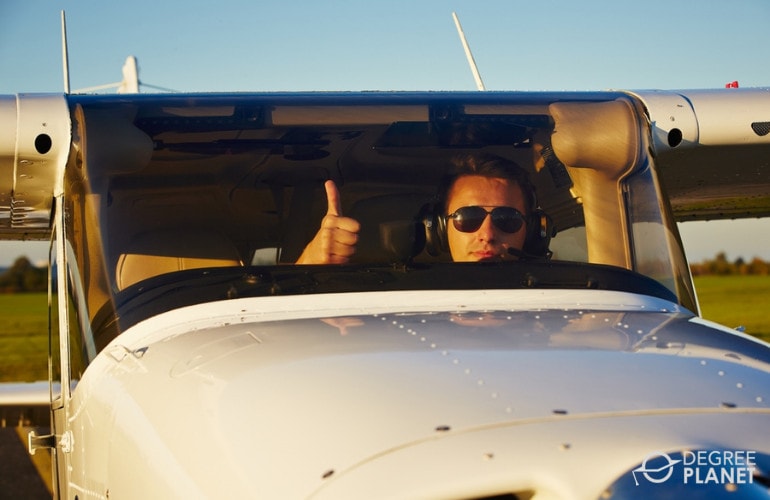
In order to be a licensed pilot, it’s necessary to meet medical clearances and a list of other stringent requirements. While bachelor’s degrees are not an FAA requirement for pilot certifications, a bachelors may be required by some employers.
Here are some piloting instances in which a degree is typically not needed, just the appropriate level of pilot certification:
- Sport and recreational flying
- Regional cargo transport
- Regional commercial airline
- Military and government air transport
Getting a job with a major airline could be a different matter. Positions with major airlines can be very competitive, and most of these jobs require having a college degree. The degree can generally be in any subject. It doesn’t need to have any bearing on your piloting skills, experience, or the number of flight hours you’ve logged.
Editorial Listing ShortCode:
There are pilot degrees, though, that include flight training and can help you earn pilot certifications during the program.
How to Become an Airline Pilot
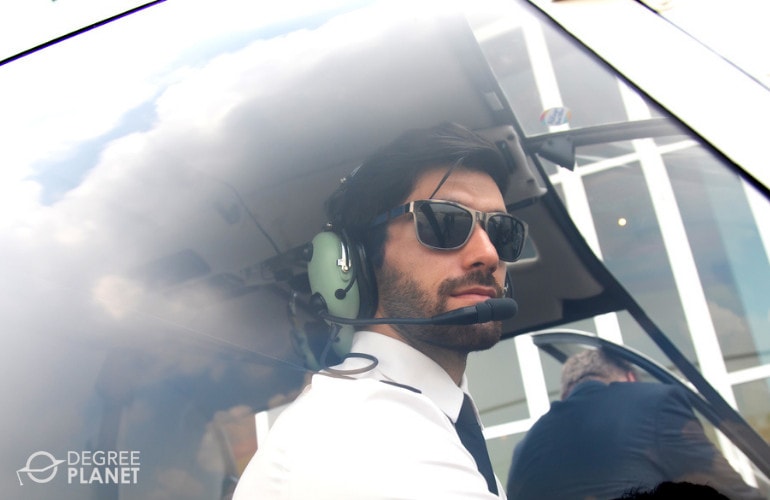
Becoming an airline pilot involves incremental steps of earning certifications and ratings. As you advance to higher levels of pilot certification, the health and medical requirements also become more stringent.
- Private pilot certification. You can go to pilot school to start your flight training and earn your private pilot certificate. This certificate allows you to fly solo in a small aircraft.
- Instrument rating. Next, you’ll earn what’s called an instrument rating. This rating demonstrates your ability to utilize instrument-assisted flight in conditions involving poor weather and limited visibility.
- Commercial pilot certification. To qualify for commercial pilot certification, you’ll get additional training and log additional cockpit hours. This certification authorizes you to be hired as a paid pilot.
- Multi-engine rating. This rating qualifies you to fly an aircraft with more than one engine. Airplanes with multiple engines can fly higher and faster than single-engine aircraft.
- Airline transport pilot certification. With the multi-engine rating, your instrument rating, and your commercial pilot certificate, you’ll start logging lots more hours of flight experience in different flying conditions in order to qualify to be a certified Airline Transport Pilot (ATP).
Qualifying to become a pilot that can fly national routes for major airlines requires having lots of piloting qualifications, an above-average bill of health, experience, and a college degree. Regional airlines, on the other hand, do not typically require their pilots to hold degrees.
Requirements to Earn a Pilot License
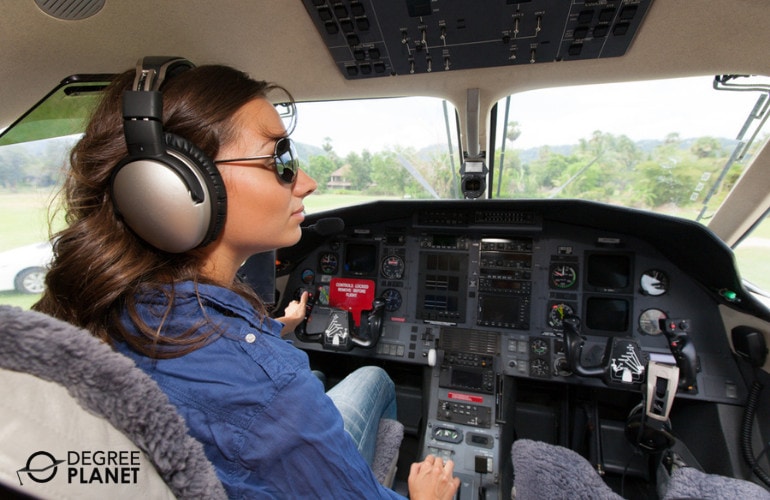
Each level of piloting certification comes with its own specific requirements, but they also build off of each other.
Private Pilot License (PPL)
With a Private Pilot License (PPL), you can fly single-engine crafts for private purposes, including sport, personal travel, and other recreational piloting. You can’t pilot for pay with this level of certification.
Here are common requirements to earn a private pilot certificate:
- Be at least 17 years old
- Log at least 35 flight hours
- Hold a student, recreational, or sport pilot certificate
- Pass required written and practical tests
- Be proficient in English
There are some factors that can impact how many flight hours you need to obtain the PPL, but the hard minimum is 35 hours. Many flight students need to fly extra hours to gain the skills and confidence they need to get the PPL.
You can get a sport or recreational license with less than 35 hours of flight time, but there are more restrictions regarding the size of aircraft and where and how far you can fly.
Commercial Pilot License (CPL)
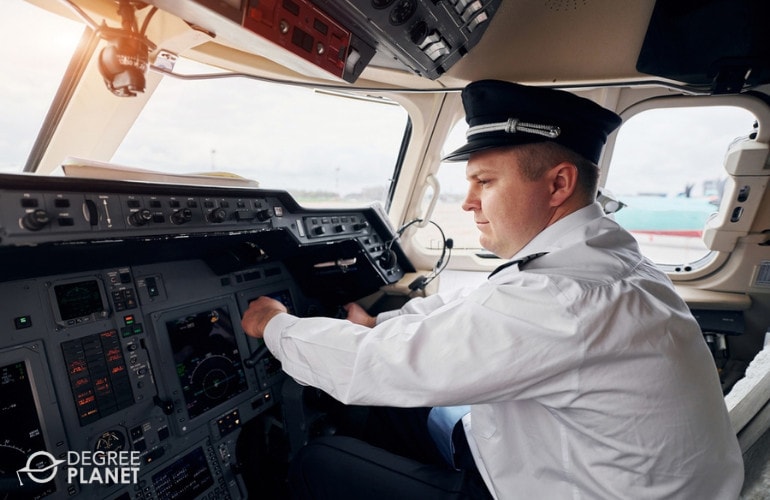
Getting a Commercial Pilot License (CPL) qualifies you to work as a hired professional and get paid for transporting cargo or passengers. To obtain a CPL, you’ll typically meet the following requirements:
- Log about 250 flight hours
- Hold a private pilot license
- Pass required written and practical tests
Earning a CPL includes cross-country and instrument-guided flight instruction. It also requires a 2nd class medical clearance.
Airline Transport Pilot (ATP) Certificate
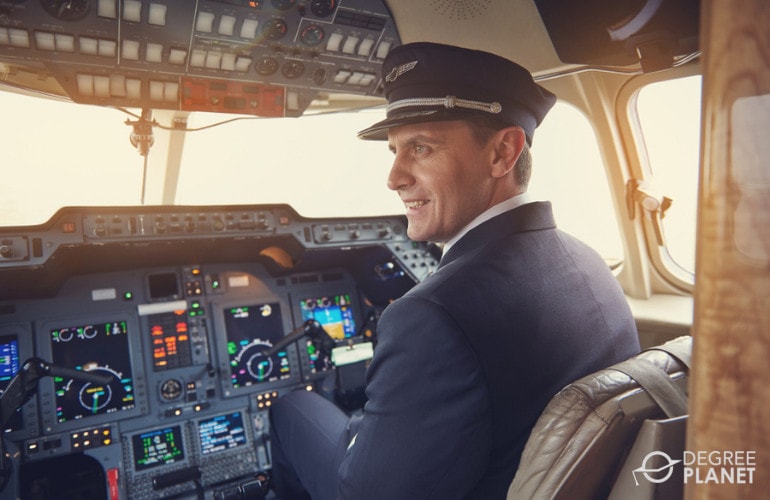
To work as a passenger transport pilot and fly regular passenger routes with airlines, it’s necessary to obtain the Air Transport Pilot (ATP) certificate.
Here are some common criteria for earning ATP certification:
- Be at least 23 years old
- Log 1500 flight hours
- Hold a commercial pilot license
- Hold an instrument rating and multi-engine rating
- Complete an ATP certification training program (ATP-CTP)
- Pass required written test
There are additional specifications for logging flight hours at night and on cross-country routes. Earning an ATP certificate also requires getting either a 1st or 2nd class medical clearance, depending on if you want to qualify to act as a pilot-in-command or a second-in-command, respectively.
How to Choose a Pilot School
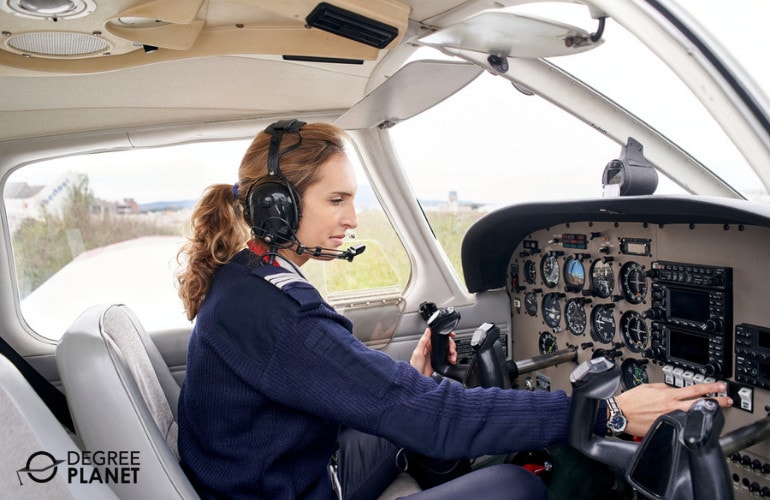
When choosing a pilot school, it’s beneficial to consider what your goals are first. For example, your short-term and long-term goals can help you determine which pilot certifications and ratings to pursue. There are also the practical considerations, such as location, instructor qualifications, and aircraft availability.
Here are a few basic considerations for aspiring pilot students:
- FAA approval. Do you mind whether or not you attend a pilot school that’s approved by the Federal Aviation Administration (FAA)?
- Pilot school vs. college program. Do you want to get instruction at a pilot school or through a four-year aviation college program?
- Instruction options. Do you want a school that offers convenient ground instruction as well as in-craft flight training?
- Training aircraft. What kind of training aircraft does the school make available?
- Scheduling preferences. Are the instructional hours and pace of instruction offered by the school a good fit for your scheduling preferences and learning goals?
- Safety record. You can check out a school’s emphasis on safety awareness and procedures, their safety practices, and their safety record.
It’s often worth doing some extra research to find a credible school that’s a good fit for your learning goals as well as your flight goals.
Flight School Financial Aid

Flight school is an exciting prospect, but it involves training requirements that can be costly.
Luckily, there are financial aid options available for students who qualify. Assistance can come in the form of federal or state grants, employer-based or workforce training programs, school scholarships, and student loans.
Editorial Listing ShortCode:
Some reputable flight schools also coordinate with student loan providers so more flight students can get help covering educational costs. Terms and conditions vary for student loans and other forms of assistance, so it’s helpful to review all financial aid offers carefully before proceeding.
If you plan to apply for any form of need-based financial aid, filling out the Free Application for Federal Student Aid (FAFSA) can be a strategic first step.
Do You Need 20/20 Vision to Be a Pilot?
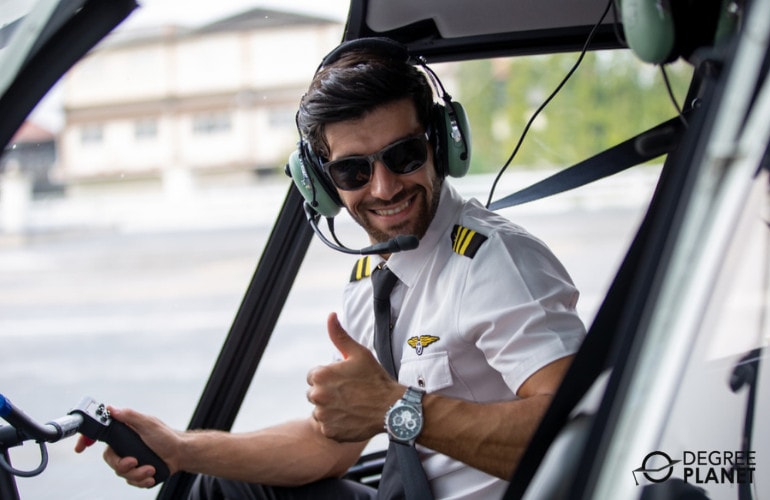
If you don’t have 20/20 vision, you can still be a pilot as long as you’re able to correct your vision to 20/20 using glasses or contact lenses. Being color-blind can also pose obstacles to aspiring pilots, but not always. It can depend on the type and degree of color blindness.
If you’re considering pursuing flight school and airline transport pilot certification, you may want to look into all health and medical requirements. It can help to find out if you have any health factors that could impact your eligibility for obtaining a specific level of certification.
Do You Need a College Degree to Be a Pilot?
No, you don’t need a college degree to be a pilot. There are a number of jobs for commercial pilots that only require the appropriate certification and ratings. That said, many regional airlines prefer candidates to have at least an associate degree if not a bachelors.
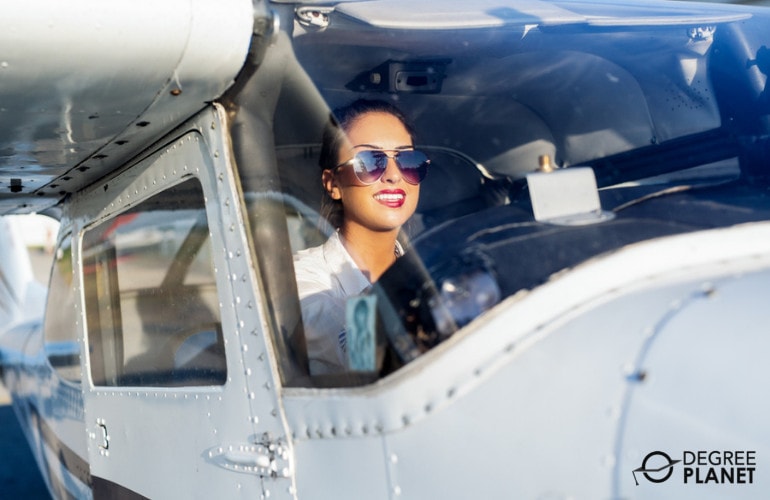
Most major airlines require prospective pilots to have a bachelor’s degree, but the degree can typically be in any major. It does not even have to be related to an aviation major.
What Qualifications Do You Need to Become a Pilot?
Here’s a list of various qualifications you’ll come across when seeking pilot certifications:
- Meet minimum age requirements
- Demonstrate English proficiency
- Obtain specified medical clearances
- Obtain necessary pilot certifications and flight ratings
- Log required flight hours
- Pass written and practical tests for each certification
A college degree is not required to be a licensed pilot, but some employers or jobs may prefer their pilots to have a bachelors in any field. Each level of pilot certification has its own specific requirements. The Airline Transport Pilot (ATP) certification is the highest level for pilots and has the most stringent requirements.
What Does a Pilot Do?
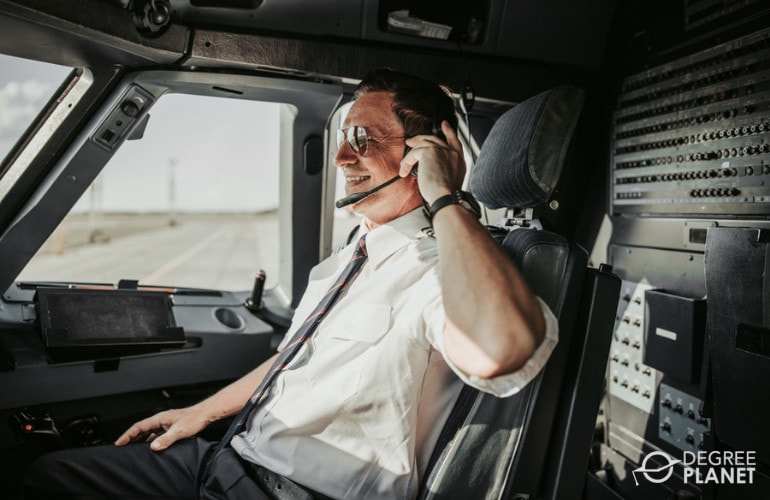
Pilots fly aircraft, including take off and landing maneuvers. But what else do pilots do? Depending on their certification level, pilots can perform various recreational or professional activities. Here are some tasks, though, that are common among pilots:
- Perform pre-flight and post-flight safety checks
- Maintain flight records
- Communicate with air traffic controllers or ground crews
- Monitor meteorological conditions
- Select and monitor flight paths
- Identify possible flight risks
- Ensure safety of aircraft and any passengers
A big part of being a pilot is flying, but pilots are also responsible for carrying out many additional tasks that make it possible to take off, fly, and return safely.
How Much Do Pilots Make?
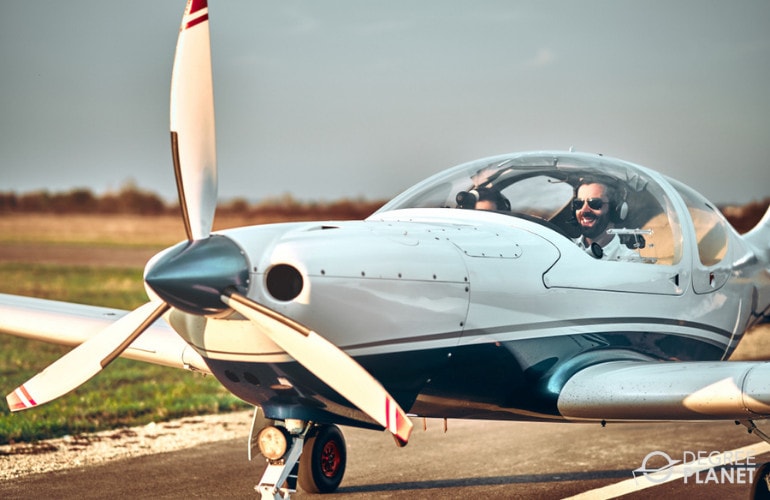
How much pilots earn can vary significantly based on experience, certifications, industry, geography, and employer.
To be eligible to become a paid, professional pilot, you’ll first obtain a Commercial Pilot License (CPL). In addition, an Air Transport Pilot (ATP) certification is required in order to work for an airline.
According to the Bureau of Labor Statistics, the median salary for commercial pilots is $93,300 per year, and the median for airline pilots, copilots, and flight engineers is $160,970.
Getting Your Pilot Degree Online

Are you ready to get your head out of the clouds and to hit the runway? You can get started by checking out accredited online bachelor’s degree in aviation programs.
Online aviation degree programs can provide access to a range of schools with flexible and convenient schedule options. You can complete your aviation coursework online while you take your piloting ground classes. Your goal of becoming a professional pilot could be ready for takeoff sooner than you think!
Also, just so you know, if you are interested in the aviation field as a career, but don’t necessarily want to be a pilot, you could consider getting an aviation management degree online.

